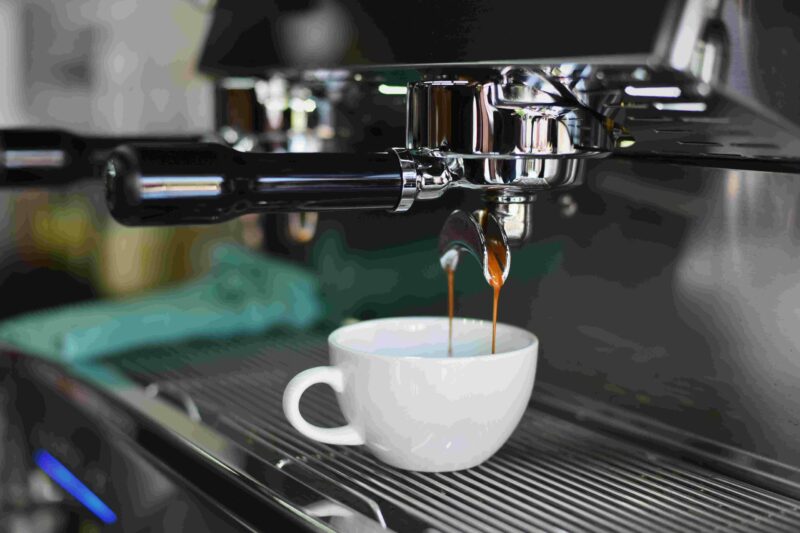Espresso has been an iconic symbol of coffee culture for decades. What many don’t realize is the fascinating journey of the espresso machine’s development from the 19th century to the modern age. Dive into a cup filled with history, innovation, and the irresistible aroma of fresh coffee.
How Did the Espresso Machine Come Into Existence?
The first espresso machines emerged from the simple human desire for a quicker, more potent cup of coffee. Contrary to popular belief, espresso is not a type of coffee bean, but rather a brewing process that transforms a good coffee bean into a robust and flavorful cup of coffee. Espresso machines initially served as a catalyst for this transformation, brewing coffee more efficiently while preserving and enhancing its taste.
Fact: The term ‘Espresso’ originates from the Italian word ‘express,’ which means fast. Ironically, traditional espresso takes about 25 to 30 seconds to brew.
Who Were the Pioneers?
The Early Steam Machines: Babaut and Santais
The timeline of who invented the first espresso machine can be a bit murky. Some records point to Louis Bernard Babaut creating the first espresso coffee maker in 1822. Edward Santais later commercialized the invention, with the machine making its grand entrance at the Universal Exposition in Paris in 1855. Interestingly, this machine was capable of producing 1,000 cups of espresso in an hour! It used steam to force water through coffee held in a filter.
Did You Know?: Espresso as a brewing method is rooted in France, despite being associated largely with Italian culture today.

The Risk of Early Innovation
However, early versions had their drawbacks, including the machine’s alarming tendency to explode due to steam pressure. It also occasionally burnt the coffee, leading to a less-than-perfect brew.
Pressure Matters: One of the most crucial aspects of an espresso machine is the pressure it can generate. A quality espresso is often extracted at around 9 bars of pressure, which is about nine times the atmospheric pressure at sea level. This is what gives espresso its signature richness and intensity.
Mastering the Skill: User’s Control
The early espresso machines were not just “plug and play.” They required the operator to control the heat and water flow, leading to a diverse range of results depending on the operator’s skill.
The “God Shot”: In barista lingo, a “God Shot” is the perfect shot of espresso. Achieving this requires a balance of numerous variables: the quality of the coffee bean, the fineness of the grind, the pressure, and the timing of the extraction. Many espresso enthusiasts and professional baristas spend years trying to consistently create the elusive “God Shot.”
Luigi Bezzera: The Fast Coffee Machine
Luigi Bezzera, an Italian manufacturer, wanted coffee, and he wanted it fast. In 1903, he invented an espresso machine that employed steam pressure to push water through a fixed coffee filter. The technology was groundbreaking, offering a faster, better cup of coffee.
Fact: Luigi Bezzera’s machine is often recognized as the first “true” espresso machine because it added pressure to the brewing process, which is a fundamental aspect of espresso-making today.
From Bezzera to Pavoni: The Espresso Takes Off
Bezzera might have been an inventor, but he wasn’t a marketer. In 1905, Desiderio Pavoni bought the rights to Bezzera’s espresso machine and successfully marketed it throughout Europe, changing the way the continent enjoyed coffee.

Francesco Illy: The Air-Powered Evolution
In 1935, Francesco Illy introduced a groundbreaking machine that used compressed air instead of steam, thereby eliminating the risk of explosions. This air-powered machine gave a more stable and consistent result.
Achille Gaggia and the Lever Action
Achille Gaggia took espresso machines to a new level in 1945 by introducing lever action, further refining the espresso-making process. This development led to the modern espresso machines we know today, which allow for even more control over the brewing process.
Ernest Valente and the Electric Pump
In 1950, Ernest Valente introduced an electric rotating pump, which allowed for a continuous and even flow of water through the coffee maker.
Illy Returns: Simplification and Modernization
Francesco Illy wasn’t done innovating. In the 1970s, he simplified the espresso process by introducing a machine that combined the best aspects of earlier models, featuring double filters and a user-friendly design.
The Age of Super-Automatic Espresso Machines
By the 1970s, super-automatic espresso machines were born. These machines are the norm today, offering an easier and faster way to get a delicious cup of espresso.
Smart Espresso Machines
Modern espresso machines are now incorporating smart technology. Some high-end models can be connected to your smartphone, allowing you to customize brewing settings, schedule your morning shot, and even perform maintenance checks—all through an app.
The Debate Continues
Today, espresso machines range from simple stovetop models to complex super-automatic machines that grind, tamp, and brew the coffee at the press of a button. Yet, the debate over which method produces the best espresso continues to percolate.
Did You Know?: Espresso has about 63 mg of caffeine per 1-ounce (30-milliliter) shot, compared to approximately 95 mg in an 8-ounce (240-milliliter) cup of coffee. Quality over quantity, perhaps?
A Journey Through Time
Espresso machines have come a long way from their risky and rudimentary origins. Over two centuries of innovation have shaped them into the sleek, efficient, and diverse machines we know today. As long as the love for a rich, aromatic cup of espresso exists, the evolution of the espresso machine is far from over. Cheers to the next cup!


